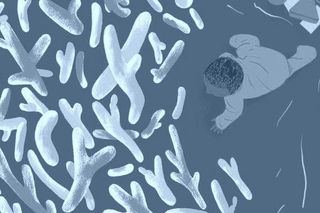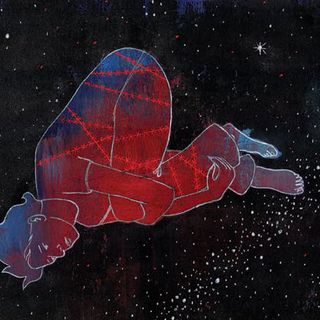
Science Is Starting to Connect More of the Dots Behind the Cause of Childhood Cancers
A sanitized environment may not be as good for kids as we think.

Can a yogurt-like smoothie prevent childhood cancer? It seems a bit simplistic, but one expert, with three decades of experience tracing the causes of childhood cancer, is banking on this in-development cocktail of microbes doing just that.
Mel Greaves, of the Institute of Cancer Research in London, outlines the multiple contributing causes of a common childhood cancer called acute lymphoblastic leukemia in an interview with The Guardian. The first risk factor is an in-utero genetic mutation that occurs in about one in 20 children, he says. But that alone is not a cause of childhood cancer. An underexposed and underdeveloped immune system — an increasingly common phenomenon amid high-income, global concern for creating an as-sanitized-as-possible environment — creates a perfect storm that acts as the trigger.
“The disease tracks with affluence,” Greaves told The Guardian, though it is by no means unknown in less-developed countries; in India, 9,000 children are diagnosed with leukemia each year.
Related on The Swaddle:
How the Infant Microbiome Shapes Kids’ Long‑Term Health
“For an immune system to work properly, it needs to be confronted by an infection in the first year of life,” Greaves explained. “Without that confrontation with an infection, the system is left unprimed and will not work properly.”
Higher rates of antibacterial hand soap and surface cleaner use, lower rates of breastfeeding, and less contact with people outside the home, all combine to reduce or avoid that infectious confrontation, with the result that, “when such a baby is eventually exposed to common infections, his or her unprimed immune system reacts in a grossly abnormal way,” Greaves said. “It over-reacts and triggers chronic inflammation.”
This chronic inflammation triggers the release of chemicals known as cytokins — which can prompt the second mutation, in children who carry the first mutation, that together trigger childhood leukemia.
The cause then, of childhood leukemia, is “a double whammy of interacting prenatal and environmental events,” The Guardian article summarizes — an effect of modern living, but not one expounded in most popular theories (which typically theorize around low-level radiation exposure).
“We do not yet know how to prevent the occurrence of the initial prenatal mutation in the womb, but we can now think of ways to block the chronic inflammation that happens later on,” Greaves said.
Which brings us to his elixir — Greaves and collaborators are looking to create a cocktail of the right bacteria, viruses and microbes that would diversify the gut bacteria of children born with the first risk-mutation, in a way that could ‘prime’ their immune system to avoid the inflammation that triggers the second mutation. He envisions it as a “yogurt-like drink” that could be administered to very young kids, and says it might also be beneficial to other childhood conditions, like type 1 diabetes and allergies, that have been linked to altered microbiomes and underdeveloped immunity.
“We need to find ways of reconstituting their microbiomes – as we term this community of microbes,” Greaves said. “We also need to find which are the most important species of bacteria for priming a child’s immune system.”
Liesl Goecker is The Swaddle's managing editor.
Related


Men and Women Remember Physical Pain Very Differently
